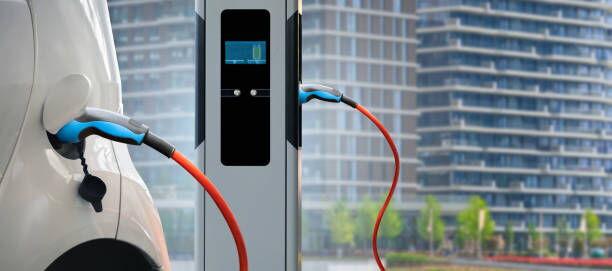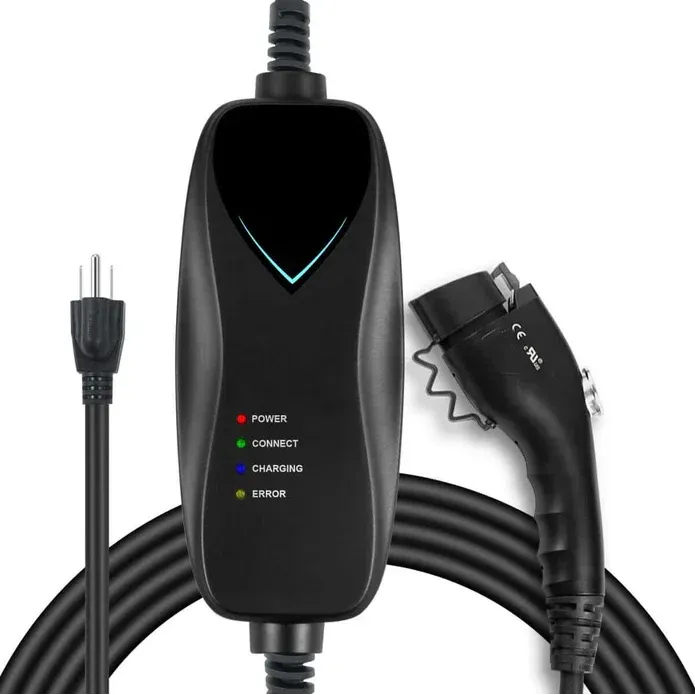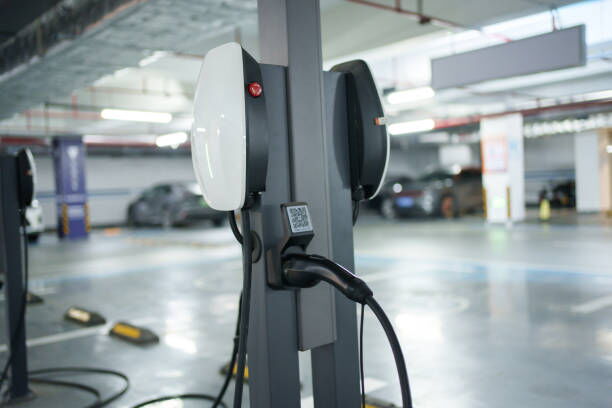As electric vehicles (EVs) continue to reshape the transportation landscape, the question of how best to charge them has become increasingly important. Whether you’re a seasoned EV owner or just considering making the switch, understanding the differences between 110V and 220V charging options is key to maximizing convenience and efficiency.
While EVs are praised for their low operating costs, environmental benefits, and cutting-edge technology, one practical aspect can sometimes be overlooked: how long it takes to charge them. The speed and ease of recharging your EV depend heavily on the type of charger and electrical supply you use. Two of the most common household voltages in North America are 110V and 220V, and they offer vastly different charging experiences.
In this article, we’ll break down what 110V and 220V charging mean, the pros and cons of each, and how to choose the right setup for your home and driving needs.

A 110V charger, often referred to as a Level 1 EV charger, is the most accessible and universally compatible charging method for EVs. It plugs directly into a standard household electrical outlet—the same one you’d use for a lamp, toaster, or laptop. Every EV sold in the U.S. typically comes with a Level 1 charger in the box.
A 110V charger delivers electricity at a low rate—typically around 12 amps, resulting in about 1.2 kW of charging power. This means you’ll gain roughly 3 to 5 miles of range per hour of charging, depending on your vehicle's battery capacity and efficiency.
Convenience: No special equipment or installation is needed. Just plug in and charge.
Cost-effective: Since it uses a standard outlet, there’s no need for upfront electrical upgrades.
Safe and simple: Designed to meet safety standards for everyday household use.

Extremely slow: Fully charging a long-range EV like a Tesla Model Y or Ford Mustang Mach-E can take two to three full days.
Not ideal for daily driving: If you drive more than 30–40 miles a day, Level 1 charging may not keep up with your needs.
Less efficient: Longer charge times mean more electricity may be lost as heat over time.
A 220V charger, also known as a Level 2 charger, offers a significant boost in charging speed compared to Level 1. This type of charger uses the same voltage as larger household appliances like dryers and ovens. It requires a dedicated 220V or 240V circuit and usually involves professional installation.
Level 2 chargers typically operate at 16 to 40 amps or more, delivering 3.3 to 19.2 kW of power depending on the configuration. This results in a charging rate of around 25 to 35 miles of range per hour, which is ideal for daily driving needs and quick overnight charging.
Fast and efficient: Fully recharge your EV in 4 to 10 hours depending on your battery size.
Perfect for overnight charging: You’ll wake up to a fully charged car even after a long commute the day before.
Flexible usage: With faster charging, you can top off your battery at any time during the day.
Requires installation: You may need to hire an electrician to install a dedicated 220V outlet or wall-mounted charger.
Higher upfront cost: Between the charger and installation, setup costs can range from $500 to over $2,000.
Not universally available: Older homes may lack the wiring capacity for a new high-powered circuit.

|
Feature |
110V (Level 1) |
220V (Level 2) |
|
Voltage |
110–120 volts |
220–240 volts |
|
Power Output |
~1.2 kW |
3.3–19.2 kW |
|
Range Added Per Hour |
3–5 miles |
25–35 miles |
|
Full Charge Time |
24–72 hours |
4–10 hours |
|
Installation Required? |
No |
Yes |
|
Best For |
Occasional driving, hybrids |
Daily drivers, long-range EVs |
|
Upfront Cost |
Minimal |
Moderate to high |
This is a common question—and the answer is both simple and critical to understand: no, you cannot turn a 110V outlet into a 220V outlet using a standard adapter. Adapters can only connect devices to existing voltages—they do not create or convert power levels.
True Level 2 charging requires a genuine 220V power source with appropriate wiring, amperage, and a circuit breaker that can safely handle the increased load. Attempting to use an adapter to "fake" a higher voltage can result in electrical hazards, fire risks, or damage to your vehicle’s onboard charging system.
If your home already has a 220V outlet—for example, in a laundry room or garage—you might be able to use a portable Level 2 charger with an appropriate plug adapter. However, it’s essential to:
Check the circuit's amperage to ensure it matches your charger’s requirements.
Use UL-listed adapters to maintain safety.
Follow local electrical codes and consult a licensed electrician when in doubt.
Modern Level 2 chargers offer more than just fast power delivery. Many come equipped with Wi-Fi or Bluetooth connectivity, allowing you to:
Schedule charging sessions during off-peak electricity hours.
Monitor energy usage and costs.
Receive alerts if charging is interrupted.
Control and optimize charging through mobile apps.
These features can help you reduce energy costs, protect your battery health, and gain insights into your driving and charging habits.
While Level 1 charging is practically free from a setup perspective, investing in Level 2 comes with upfront costs. Here’s a breakdown of typical expenses:
Charger cost: Included with your EV.
Installation cost: $0.
Monthly electricity cost: Depends on usage but generally $20–$50.
Charger cost: $300 to $700 (for portable or wall-mounted units).
Installation cost: $500 to $1,500 (depends on home electrical system).
Monthly electricity cost: Similar to Level 1 but more efficient.
Despite the higher initial investment, Level 2 charging pays off in time saved and greater daily convenience—especially if your driving habits involve more than short commutes.
Choosing between 110V and 220V charging depends on your unique lifestyle and needs. Ask yourself the following questions:
If your daily commute is under 30 miles, Level 1 might be sufficient.
If you regularly travel longer distances, Level 2 is a must.
Level 1 chargers require much more time, so overnight charging is essential.
Level 2 chargers give more flexibility for irregular schedules.
Older homes may need electrical panel upgrades.
Newer homes often have easier access to 220V circuits.
A Level 2 setup can be a worthwhile investment if you’ll use it for years.
Many utility companies and state governments offer rebates for EV charger installation.
The shift to electric vehicles is well underway, and how you charge your EV is just as important as the car you choose. While 110V (Level 1) charging provides a low-cost, easy-entry option for casual or short-distance drivers, it’s not ideal for those who need fast, reliable recharging on a daily basis.
For most EV owners, upgrading to a 220V (Level 2) charging solution unlocks the full potential of electric driving. Faster charging, greater convenience, and smarter energy use all make Level 2 a wise choice for those who rely on their EV as a primary mode of transportation.
Before deciding, weigh your driving habits, home setup, and long-term goals. Whether you choose to stick with 110V or invest in a 220V system, the key is making an informed choice that keeps your EV ready to go—whenever and wherever the road takes you.